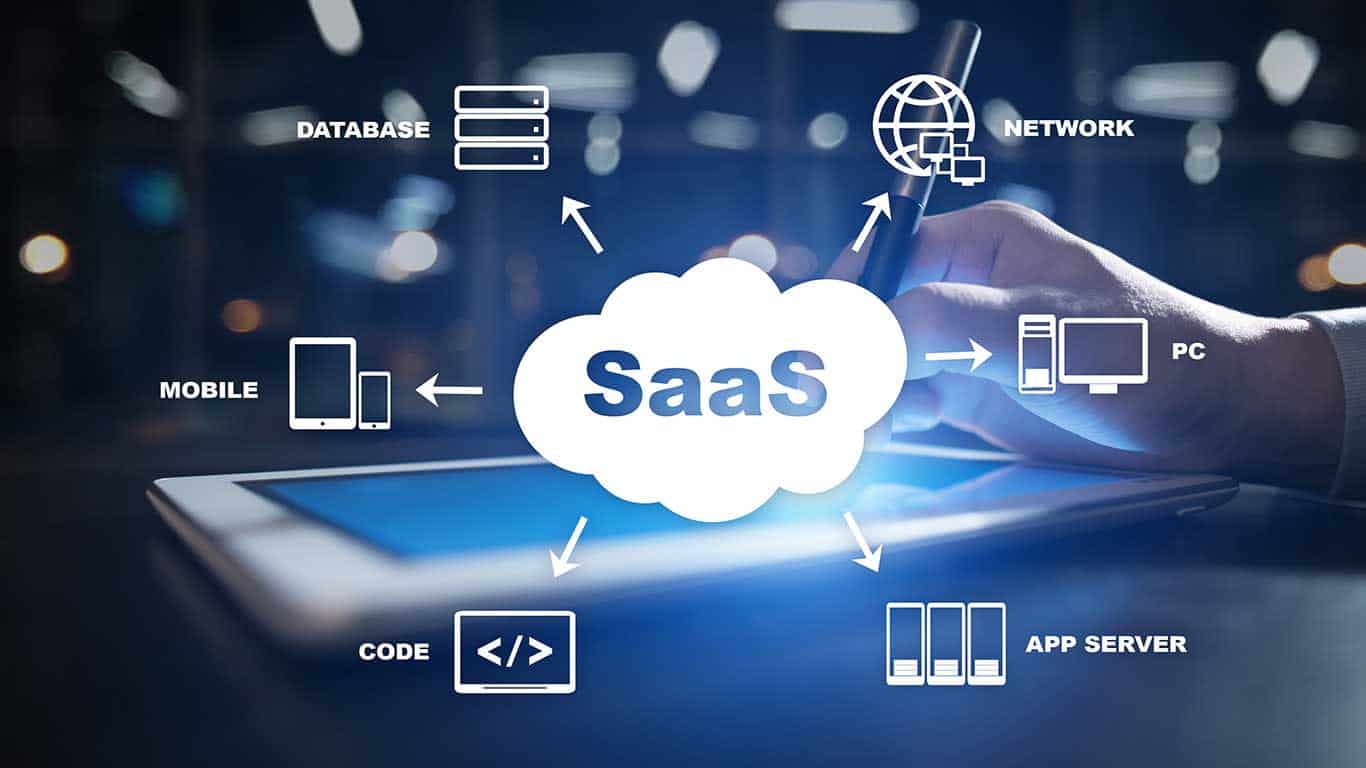Unlocking the Future: Harnessing Predictive Analytics Solutions for Optimal Results
In our fast-paced world, the ability to predict future outcomes has become more valuable than ever before. Every decision we make, whether in business or in our personal lives, carries a level of uncertainty. What if there was a way to harness the power of data and unlock insights that could help us make more informed choices? Enter predictive analytics solutions, the key to unlocking the future. Predictive analytics solutions are transforming industries across the globe, from finance and healthcare to marketing and manufacturing. By analyzing historical data and identifying patterns, these powerful tools allow organizations to make accurate predictions and optimize their results. But what exactly are predictive analytics solutions, and how can they be utilized to drive optimal outcomes? Imagine being able to predict market trends before they happen, allocate resources efficiently, or even identify potential risks before they become major issues. These are just a few of the possibilities that arise when we harness the power of predictive analytics solutions. By leveraging advanced algorithms and machine learning techniques, these solutions can sift through vast amounts of data, uncover hidden patterns, and provide actionable insights that drive success. In this blog post, we will delve deep into the world of predictive analytics solutions. We will explore how these tools work, the benefits they offer, and real-world examples of how organizations have leveraged them to achieve remarkable results. Whether you’re a business owner, a data analyst, or simply curious about the future of data-driven decision-making, this post is for you. So, buckle up and get ready to unlock the future with predictive analytics solutions!
Understanding Predictive Analytics Solutions: A Comprehensive Overview
Predictive analytics solutions are revolutionizing the way organizations make decisions. By utilizing historical data and advanced algorithms, these tools can provide valuable insights and predictions that drive optimal results. In this section, we will explore the fundamentals of predictive analytics solutions and how they work.
Predictive analytics solutions are built on the foundation of data analysis. They leverage historical data to identify patterns, trends, and correlations that can be used to make predictions about future outcomes. These solutions utilize a combination of statistical modeling, machine learning algorithms, and data mining techniques to uncover hidden insights within vast datasets.
One of the key components of predictive analytics solutions is the development of predictive models. These models are created by analyzing historical data and identifying relevant variables that have an impact on the outcome being predicted. The models are then trained using this data to learn patterns and relationships between variables.
Once the predictive models have been developed, they can be used to make predictions on new or unseen data. This is done by inputting relevant variables into the model and allowing it to generate a prediction based on its learned patterns. The accuracy of these predictions depends on the quality of the training data and the complexity of the model.
Overall, predictive analytics solutions provide organizations with a powerful tool for making informed decisions based on data-driven insights. By understanding how these solutions work, businesses can unlock their full potential and gain a competitive edge in today’s fast-paced world.
How Predictive Analytics Solutions Work: Unraveling the Algorithms
The success of predictive analytics solutions lies in their ability to unravel complex algorithms that power them. In this section, we will dive deeper into how these algorithms work and what makes them so effective in generating accurate predictions.
At the core of predictive analytics solutions are machine learning algorithms. These algorithms are designed to learn from data, identify patterns, and make predictions based on those patterns. There are several types of machine learning algorithms used in predictive analytics, including regression analysis, decision trees, neural networks, and support vector machines.
Regression analysis is a commonly used algorithm in predictive analytics. It is used to model the relationship between a dependent variable and one or more independent variables. By analyzing historical data, regression analysis can identify the relationship between variables and use it to make predictions on new data.
Decision trees are another popular algorithm in predictive analytics. They work by dividing the dataset into smaller subsets based on different attributes or variables. Each subset is then further divided until a prediction can be made. Decision trees are easy to interpret and provide valuable insights into the factors that influence predictions.
Neural networks are a more complex type of algorithm that mimics the structure and function of the human brain. They consist of interconnected nodes or “neurons” that process information and make predictions based on learned patterns. Neural networks excel at handling large amounts of data and can uncover intricate relationships between variables.
Support vector machines (SVM) are powerful algorithms for classification and regression tasks. They work by finding an optimal hyperplane that separates different classes or predicts continuous values. SVMs can handle high-dimensional datasets and have been successfully applied in various industries.
These are just a few examples of the algorithms used in predictive analytics solutions. Each algorithm has its strengths and weaknesses, and their effectiveness depends on the nature of the problem being solved. By understanding how these algorithms work, organizations can choose the most suitable approach for their specific needs.
Unleashing the Power of Data: Leveraging Historical Data for Insights
Historical data is a goldmine of insights waiting to be discovered. In this section, we will explore how predictive analytics solutions leverage historical data to uncover valuable insights and drive optimal results.
Historical data refers to past records, transactions, and events that have been collected and stored over time. This data can come from various sources, such as customer databases, sales records, social media interactions, or sensor readings. By analyzing this data using predictive analytics solutions, organizations can gain a deeper understanding of their operations and make informed decisions.
One of the key advantages of leveraging historical data is the ability to identify patterns and trends. By analyzing past performance and outcomes, organizations can uncover hidden relationships between variables and use them to predict future behavior. For example, a retail company may analyze historical sales data to identify seasonal trends or customer preferences.
Predictive analytics solutions also allow organizations to segment their data based on different criteria. This segmentation enables businesses to target specific customer groups or identify outliers that require special attention. By understanding the characteristics of different segments, organizations can tailor their strategies and offerings for maximum impact.
Furthermore, historical data can be used to create benchmarks and set performance targets. By comparing current performance against past results, organizations can measure progress and identify areas for improvement. This allows businesses to make data-driven decisions that drive efficiency and optimize outcomes.
In summary, leveraging historical data through predictive analytics solutions provides organizations with a wealth of insights that can drive optimal results. By understanding past patterns and trends, businesses can make informed decisions that lead to success in today’s competitive landscape.
Identifying Patterns: Extracting Hidden Gems from Vast Datasets
In today’s digital age, vast amounts of data are being generated every second. But how do we extract meaningful insights from this sea of information? In this section, we will explore how predictive analytics solutions help identify patterns within large datasets and uncover hidden gems of knowledge.
When it comes to analyzing big data, traditional methods fall short. The sheer volume, velocity, and variety of data make it impossible for humans to manually process and extract insights. This is where predictive analytics solutions come into play.
These solutions utilize advanced algorithms and machine learning techniques to sift through vast amounts of data and identify patterns. By analyzing historical data, these algorithms can uncover correlations, trends, and anomalies that may not be apparent to the human eye.
One common technique used in predictive analytics is clustering analysis. This technique groups similar data points together based on their characteristics or attributes. By identifying clusters within a dataset, organizations can gain insights into customer segments, product categories, or operational patterns.
Another powerful technique is association analysis. This technique identifies relationships between different variables or items within a dataset. For example, a retailer may use association analysis to discover that customers who purchase diapers are also likely to buy baby wipes.
Predictive analytics solutions also employ time series analysis to identify patterns over time. This technique is particularly useful for forecasting future trends based on historical data. For example, a utility company may use time series analysis to predict electricity demand during different seasons.
By extracting hidden patterns from vast datasets, predictive analytics solutions enable organizations to make more informed decisions and gain a competitive edge in their respective industries.
Driving Optimal Results: Real-World Examples of Predictive Analytics Success Stories
Predictive analytics solutions have already proven their worth in various industries across the globe. In this section, we will explore real-world examples of how organizations have leveraged these tools to achieve remarkable results.
In the healthcare industry, predictive analytics has been used to improve patient outcomes and reduce costs. For example, hospitals have implemented predictive models to identify patients at risk of readmission, allowing them to intervene and provide proactive care. This has resulted in reduced readmission rates and improved patient satisfaction.
In the retail sector, predictive analytics has helped companies optimize their inventory management and pricing strategies. By analyzing historical sales data and external factors such as weather patterns or holidays, retailers can accurately forecast demand and adjust their inventory levels accordingly. This reduces stockouts, minimizes waste, and maximizes profitability.
Financial institutions have also embraced predictive analytics to detect fraudulent activities and manage risks. By analyzing transactional data in real-time, banks can identify suspicious patterns or anomalies that may indicate fraudulent behavior. This allows them to take immediate action and prevent financial losses.
These are just a few examples of how organizations have successfully utilized predictive analytics solutions to drive optimal results. The possibilities are endless, and the potential for innovation is limitless.
Predicting Market Trends: Gaining an Edge in a Competitive Landscape
In today’s fast-paced business environment, staying ahead of market trends is crucial for success. In this section, we will explore how predictive analytics solutions can help organizations gain a competitive edge by accurately predicting market trends.
Market trends are the general direction in which a market is moving over time. They can include changes in consumer preferences, emerging technologies, economic conditions, or industry regulations. By accurately predicting these trends, organizations can make strategic decisions that give them an advantage over their competitors.
Predictive analytics solutions analyze historical market data to identify patterns and correlations that may indicate future trends. For example, by analyzing past sales data and customer behavior, retailers can predict upcoming fashion trends or popular product categories.
Social media analysis is another powerful tool for predicting market trends. By monitoring social media platforms for mentions of specific keywords or brands, organizations can gauge public sentiment and identify emerging trends. This allows businesses to adjust their marketing strategies or develop new products that align with consumer preferences.
Furthermore, predictive analytics solutions can help organizations identify potential disruptors or threats in the market. By analyzing industry data and monitoring competitor activities, businesses can anticipate changes and proactively respond to emerging challenges.
By accurately predicting market trends, organizations can make informed decisions that drive growth and maintain a competitive edge in today’s dynamic business landscape.
Resource Allocation Optimization: Maximizing Efficiency and ROI
Efficient resource allocation is essential for maximizing productivity and achieving optimal results. In this section, we will explore how predictive analytics solutions can help organizations optimize their resource allocation strategies.
Resource allocation refers to the process of distributing resources such as budget, manpower, or equipment to different projects or activities. By allocating resources effectively, organizations can minimize waste, reduce costs, and maximize return on investment (ROI).
Predictive analytics solutions analyze historical data to identify patterns and correlations between resource allocation decisions and outcomes. By understanding these relationships, organizations can make data-driven decisions that optimize resource allocation.
For example, a manufacturing company may use predictive analytics to forecast demand for different products based on historical sales data. This allows them to allocate production capacity efficiently and avoid overproduction or stockouts.
In the field of marketing, predictive analytics can help optimize advertising budgets by identifying the most effective channels or campaigns. By analyzing past marketing performance data, organizations can allocate their budgets strategically to maximize reach and engagement.
Predictive analytics solutions also enable organizations to simulate different scenarios and evaluate the impact of resource allocation decisions. This allows businesses to make informed choices based on predicted outcomes rather than relying on guesswork.
By optimizing resource allocation through predictive analytics solutions, organizations can achieve higher efficiency, reduce costs, and maximize ROI.
Risk Mitigation: Proactively Identifying and Addressing Potential Issues
Risk mitigation is a critical aspect of any business strategy. In this section, we will explore how predictive analytics solutions can help organizations proactively identify and address potential risks.
Risks can come in various forms, such as financial risks, operational risks, or cybersecurity risks. By analyzing historical data and identifying patterns, predictive analytics solutions can help organizations assess the likelihood and impact of different risks.
For example, financial institutions use predictive analytics to detect fraudulent activities and prevent financial losses. By analyzing transactional data in real-time, banks can identify suspicious patterns or anomalies that may indicate fraudulent behavior. This allows them to take immediate action and mitigate the risk of financial losses.
In the field of supply chain management, predictive analytics can help organizations identify potential disruptions or bottlenecks. By analyzing historical data on supplier performance or transportation routes, businesses can proactively address issues before they escalate into major problems.
Predictive analytics solutions also enable organizations to simulate different scenarios and evaluate the impact of risk mitigation strategies. This allows businesses to make informed decisions on risk management based on predicted outcomes rather than relying on reactive measures.
By proactively identifying and addressing potential risks through predictive analytics solutions, organizations can minimize losses, protect their reputation, and ensure business continuity.
The Future of Data-Driven Decision-Making: Embracing a Predictive Analytics Mindset
Predictive analytics is not just a passing trend; it is the future of data-driven decision-making. In this section, we will explore how embracing a predictive analytics mindset can unlock new opportunities for organizations.
Data-driven decision-making refers to the practice of making informed decisions based on data analysis rather than intuition or guesswork. By leveraging predictive analytics solutions, organizations can gain valuable insights that drive strategic decision-making.
Embracing a predictive analytics mindset involves several key elements. First and foremost, it requires a commitment to data quality and data governance. Organizations must ensure that their data is accurate, reliable, and up-to-date to generate meaningful insights.
Secondly, organizations need to invest in the right technology and infrastructure to support predictive analytics initiatives. This includes acquiring the necessary tools, hiring skilled data analysts or scientists, and establishing robust data management processes.
Furthermore, organizations must foster a culture of data-driven decision-making at all levels. This involves educating employees on the benefits of predictive analytics, providing training on data analysis techniques, and encouraging collaboration between different departments.
By embracing a predictive analytics mindset, organizations can unlock new opportunities for growth and innovation. They can make informed decisions that drive efficiency, optimize outcomes, and stay ahead of the competition in today’s fast-paced business landscape.
Conclusion: Embrace the Power of Predictive Analytics for a Successful Future
Predictive analytics solutions have the power to transform industries and drive optimal results. In this blog post, we have explored the fundamentals of predictive analytics solutions, how they work, and their benefits across various industries.
We have seen how these solutions leverage historical data to uncover patterns and correlations that can be used to make accurate predictions. We have also explored real-world examples of how organizations have successfully utilized predictive analytics solutions to achieve remarkable results.
From predicting market trends to optimizing resource allocation and mitigating risks, predictive analytics offers endless possibilities for businesses seeking a competitive edge. By embracing a predictive analytics mindset and investing in the right technology and talent, organizations can unlock new opportunities for growth and success.
In conclusion, if you want to unlock the future and harness the power of data, it’s time to embrace predictive analytics solutions. The world is changing rapidly, and those who can accurately predict and adapt to these changes will thrive in the years to come.


